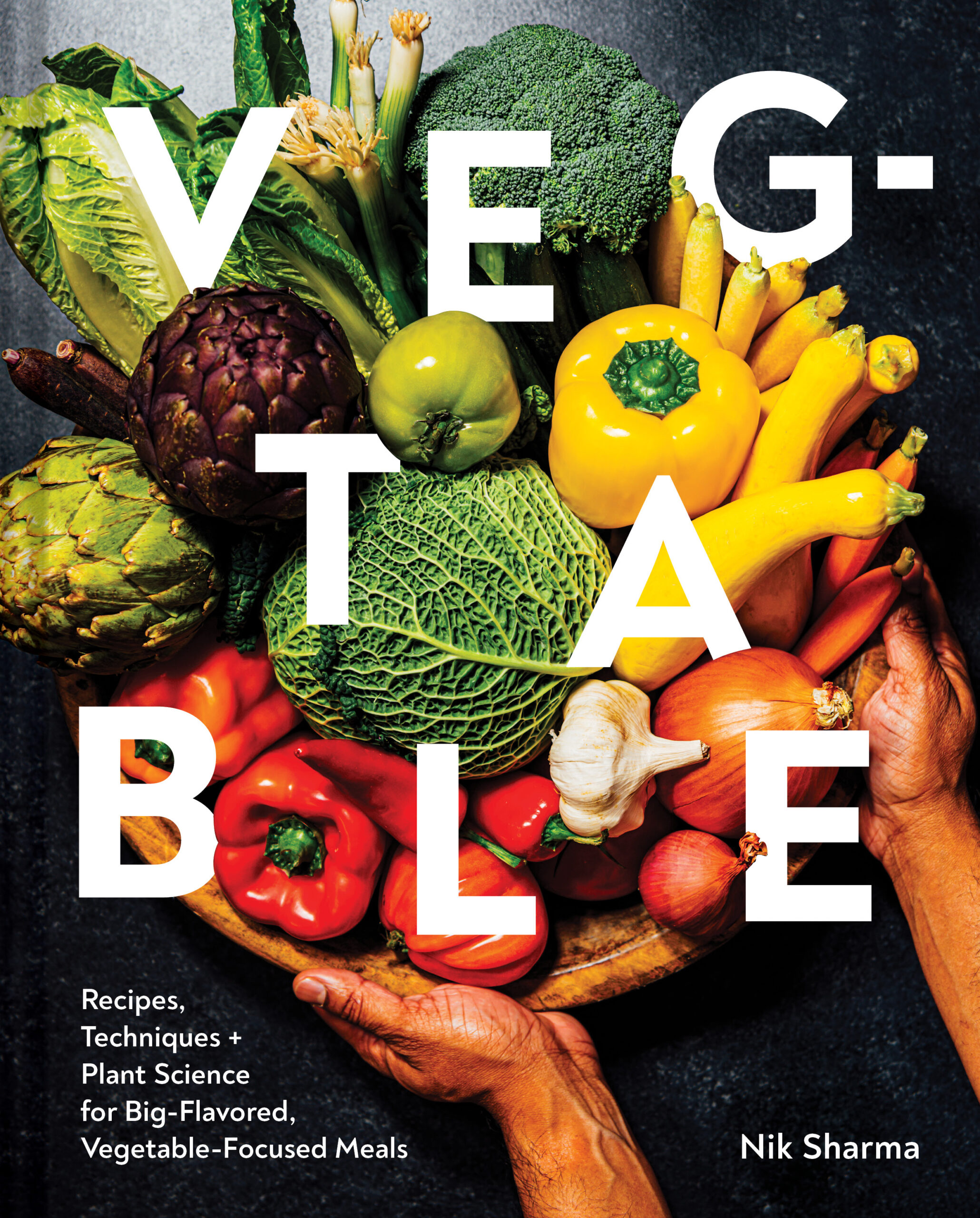
Cinnamon rolls are a staple at our home during Christmas week and on Michael’s birthday, which also happens to fall in December. This is one of the best recipes I’ve made and comes from King Arthur Baking Company and was also their recipe of 2021. The rolls get their soft pillowy texture from the tangzhong technique, which relies on hydrating starch in flour to create a softer textured bread. The tangzhong method is used for yeast-leavened breads and owes its origins to a Japanese method of bread-making called yudane/yukone that author Yvonne Chen popularized across Asia.
In the tangzhong method, a small quantity of flour is mixed with milk and cooked until it thickens to form a thick paste. The starch in the flour hydrates, and in the presence of heat, it gelatinizes to form the paste. This mixture is then mixed with the remaining flour and ingredients used to make the bread, and the result is puffier and softer bread. This method works great in cinnamon rolls; I’ve used it since I learned it. The new King Arthur Baking Company cookbook, Baking School, also includes this recipe (and makes an excellent holiday gift for a baker).








Perfect Pillowy Cinnamon Rolls
5 Stars 4 Stars 3 Stars 2 Stars 1 Star
5 from 2 reviews
‘Who doesn’t love cinnamon rolls? There’s a good reason this fragrant recipe was chosen as our Recipe of the Year in 2021. It’s a great illustration of the benefits of the tangzhong method, resulting in the most tender rolls you can make, with a shelf life that keeps them delectable for days. Used more commonly in enriched doughs, this technique—which has origins in Japan’s yukone (or yudane)—cooks a small percentage of the flour and liquid very briefly before combining the resulting thick slurry with the remaining ingredients. We use bread flour instead of all-purpose flour because of its higher protein content, which allows it to absorb more liquid without diluting the structure of the gluten strands. The more liquid in your dough, the softer it will stay for longer, which you’ll notice in these incredibly pillowy rolls that won’t go stale quickly like regular ones.’ – King Arthur Baking Company.
- Yield: 8
Ingredients
For the Tangzhong
1/2 cup/119 g whole milk
3 Tbsp/23 g unbleached bread flour
For the Dough
2/3 cups/159 g whole milk
2 1/2 cups/300 g unbleached bread flour, plus more for dusting
2 Tbsp/25 g granulated sugar
1 tsp fine sea salt
2 tsp instant yeast
4 Tbsp/57 g unsalted butter, softened
For the Filling
1 Tbsp unsalted butter, melted, plus 21 grams (1½ Tbsp) for brushing
½ cup/107 g brown sugar
2 Tbsp unbleached bread flour
3 to 4 tsp/8 to 10 g cinnamon
pinch of fine sea salt
For the Icing
1½ Tbsp/21 g melted unsalted butter, divided
½ tsp vanilla extract
1½ cups/170 g confectioners’ sugar
pinch of fine sea salt
1 to 2 Tbsp/14 to 28 g, milk, enough to thin to desired consistency
Instructions
For the Tangzhong
- Combine the milk and flour in a small saucepan, and whisk until no lumps remain.
- Place the saucepan over medium heat and cook the mixture, stirring frequently, until thickened and pastelike; the whisk should leave lines on the bottom of the pan. This will take 1 to 3 minutes, depending on the strength of your burner.
- Remove from the heat and transfer to the bowl of a mixer.
For the Dough
- Immediately add the dough ingredients to the mixer bowl in the order listed. The heat from the tangzhong will help warm the cold milk.
- Using the dough hook, mix on low speed to bring the dough together, then increase the speed to medium-low and continue to mix until the dough is smooth and elastic. This should take about 10 to 12 minutes.
- Shape the dough into a ball, place it back in the bowl, and cover.
- Let the dough rise until puffy but not necessarily doubled in bulk—about 60 to 90 minutes depending on the warmth of your kitchen.
For The Filling
- While the dough is rising, combine the melted butter with the remaining filling ingredients, stirring until the mixture is the texture of damp sand. Set aside.
- Lightly grease a baking sheet or line it with parchment.
For the Assembly and Baking
- Transfer the dough to a lightly floured work surface and press it into a 10 in by 12 in/25 cm by 30.5 cm rectangle about 1/2 in/12 mm thick.
- Sprinkle the filling over the dough, covering all but a 1/2 in/12 mm strip along one long side.
- Starting with the filling-covered long side, roll the dough into a log. Pinch the seam together to seal.
- Using a serrated knife or dental floss, cut the dough into eight rolls, about 1 1/2 in to 2 in/4 cm to 5 cm each.
- Place the rolls onto the prepared baking sheet, spacing them at least 2 in/5 cm apart; a 3-2-3 arrangement works well. To prevent them from unraveling while they rise and bake, tuck the ends of the spirals underneath the rolls to hold them in place.
- Cover the rolls with lightly greased plastic wrap and let them rise for 30 to 60 minutes. The rolls should be puffy, and the dough shouldn’t bounce back immediately when gently pressed.
- Preheat the oven to 375F/190C with a rack in the top third.
- Uncover the rolls and bake them for 14 to 18 minutes, until they’re a very light golden brown.
- Remove from the oven and brush the hot rolls with the remaining 1½ Tbsp/21 g of melted butter. Let cool for 10 to 15 minutes before icing.
For the Icing
- In a medium bowl, combine the icing ingredients, mixing until smooth.
- Ice the rolls and serve immediately. If you’re planning to serve the rolls later, wait to ice them until just before serving. Store icing at room temperature, tightly covered, until ready to use.
- Let the rolls cool completely before wrapping tightly in plastic wrap or placing in an airtight container.
Notes
VARIATIONS:
Add any of the following to the filling: ½ teaspoon orange zest; ½ cup/85 g mini chocolate chips; 1/2 cup/75 g dried cranberries or raisins; or ½ cup/57 g chopped pecans, walnuts, or nut of your choice. You can also substitute other ground spices for the cinnamon in the filling. We recommend reducing strongly flavored spices, such as nutmeg or ginger, to ½ tsp.
Advance Prep
Students often ask whether they can shape these rolls the night before, then bake them the next morning. Because of the tangzhong method, we recommend making and baking the rolls in advance, since they’ll stay wonderfully soft for at least 3 days (you can bake them up to several days in advance, then store tightly wrapped and uniced at room temperature). When ready to serve, lightly cover the rolls with foil and warm them in a 300F/150C C oven for 5 to 10 minutes, until warmed through. Ice and enjoy. We guarantee they’ll be just as delicious as those that were freshly baked.
Cream Cheese Icing
Omit the milk and use 4 to 6 Tbsp/57 to 90 g softened cream cheese. The softer the cream cheese, the easier it will be to incorporate. If the icing is too thick to spread easily, add milk (1 tsp at a time) to get the consistency you want.


3 Responses
These ARE perfect. I served them for Christmas… and my guests babbled about the wonderfulness of the rolls! So so so good! Absolutely worth the bit of extra effort and time. And bonus… I made and baked the rolls a day ahead, trusting the ‘these will reheat beautifully” guidance… and it all worked fine. A+++
Absolutely amazing, great texture and flavour. Making more tomorrow!
Yay! So happy to hear this.